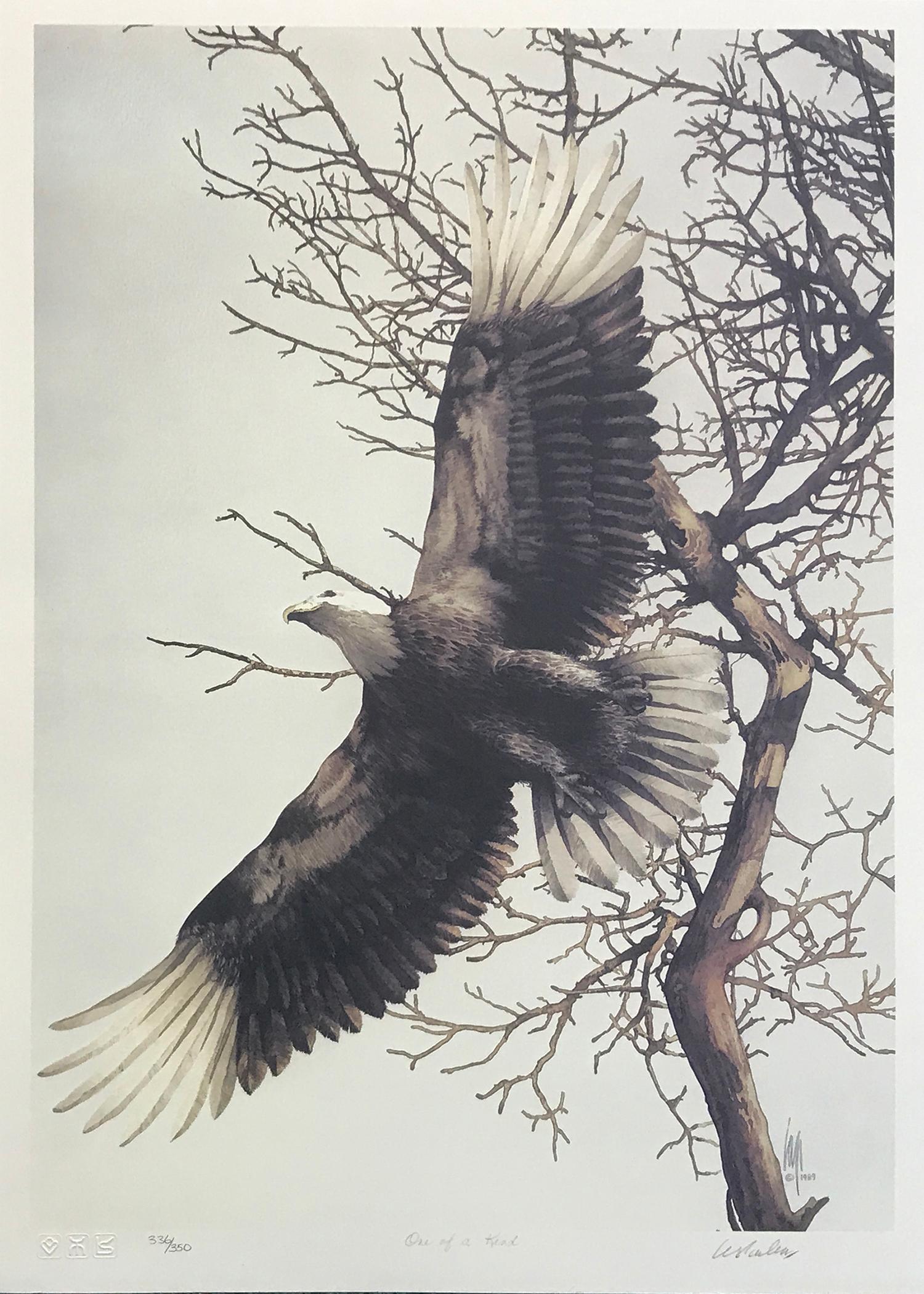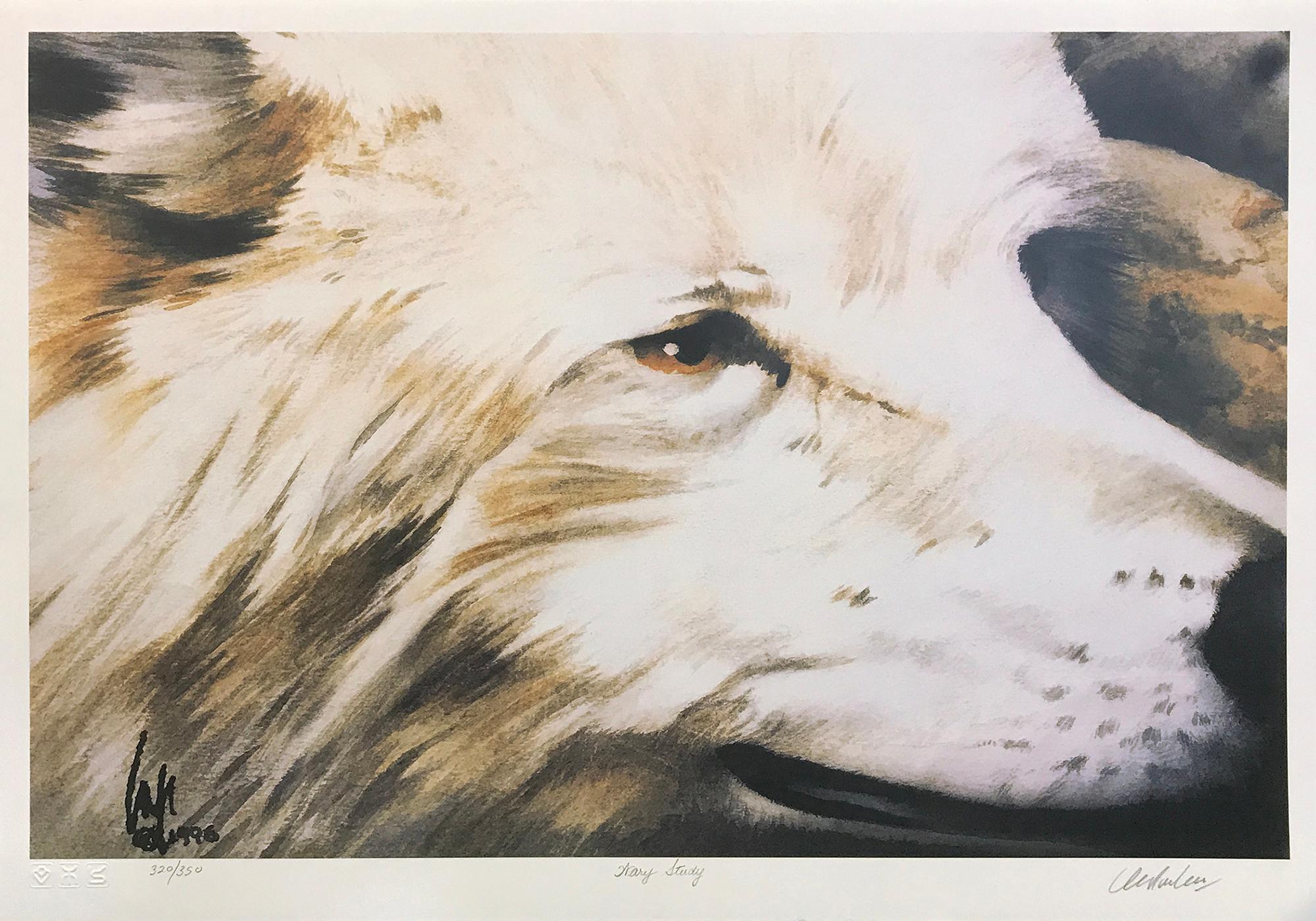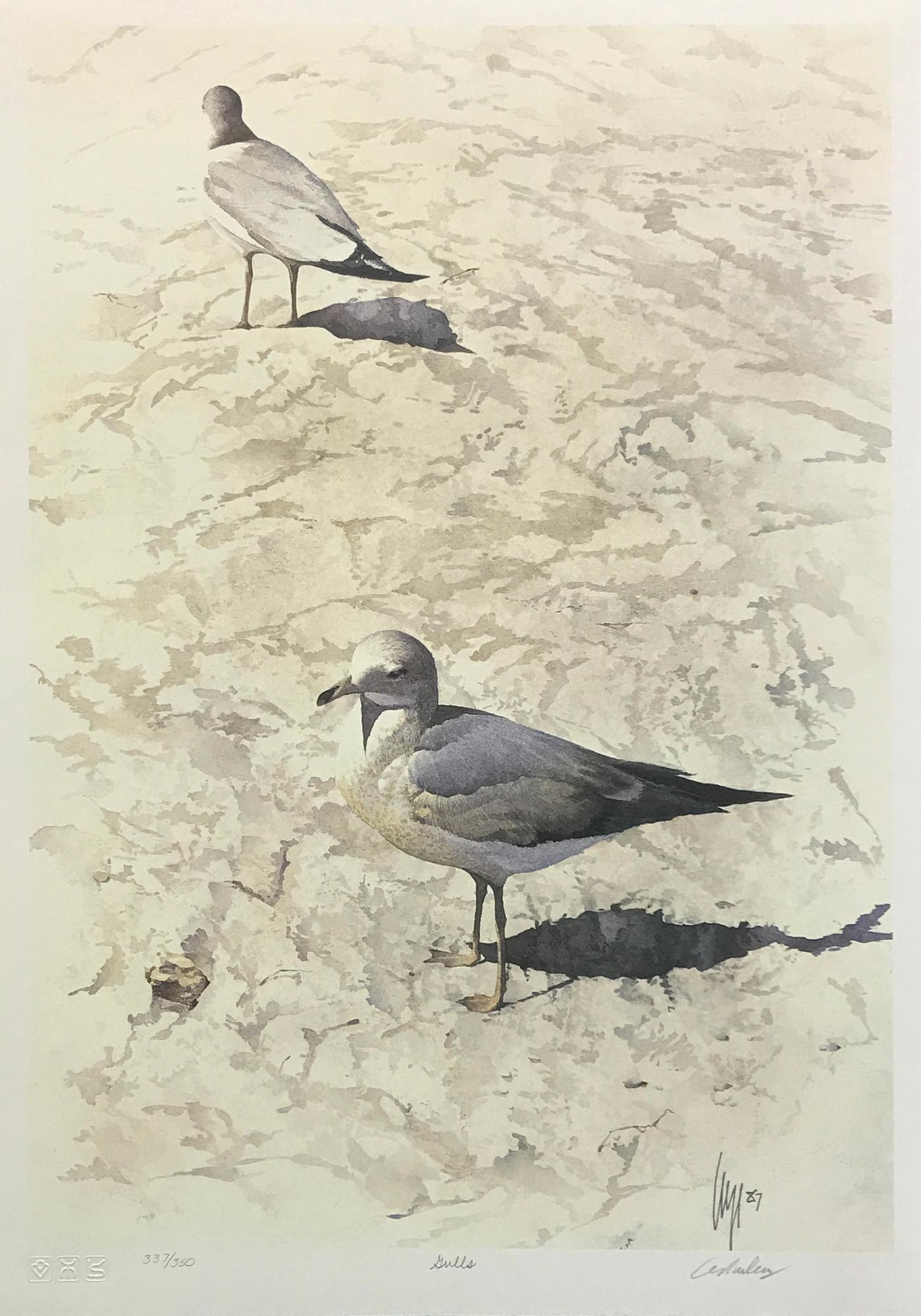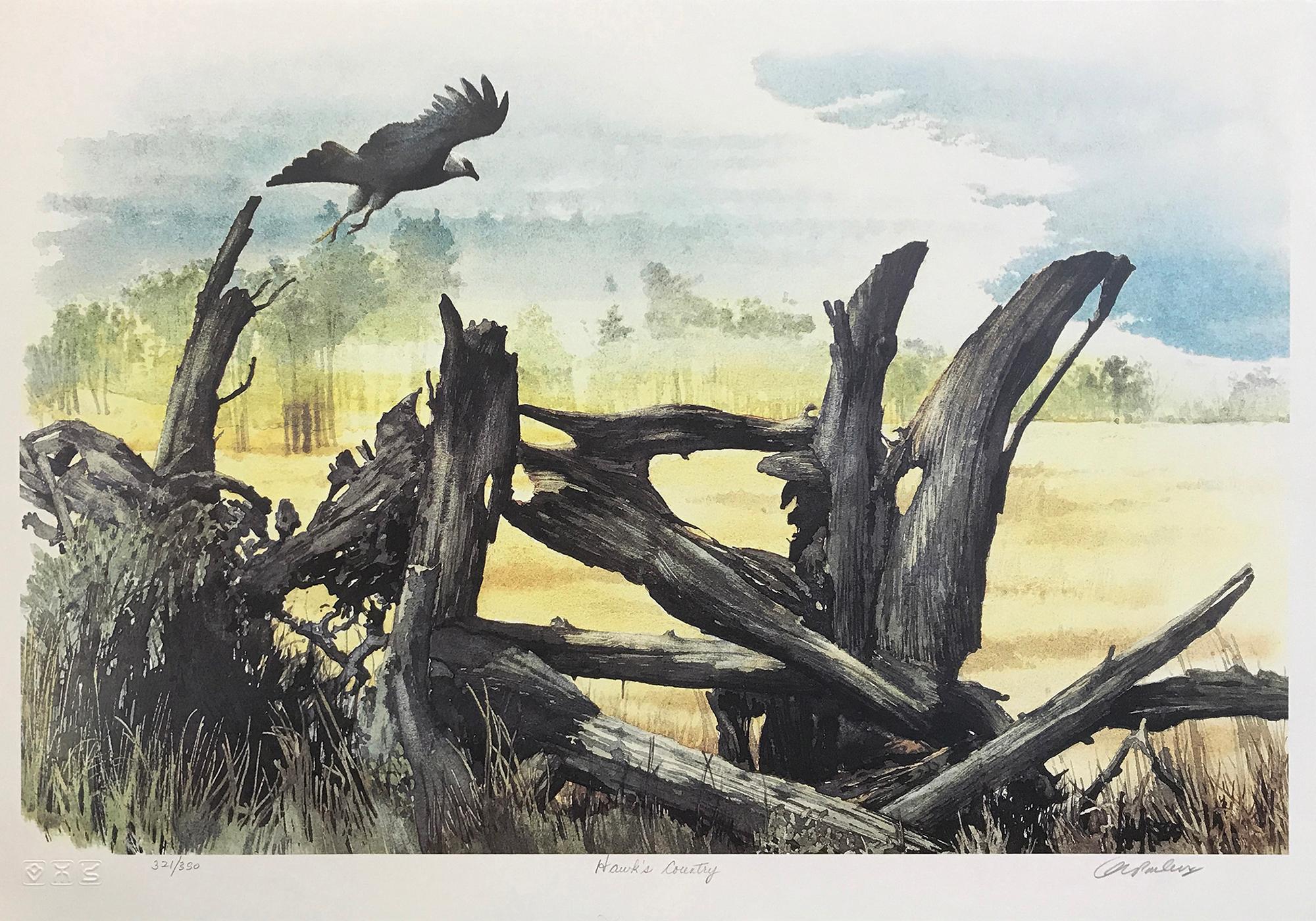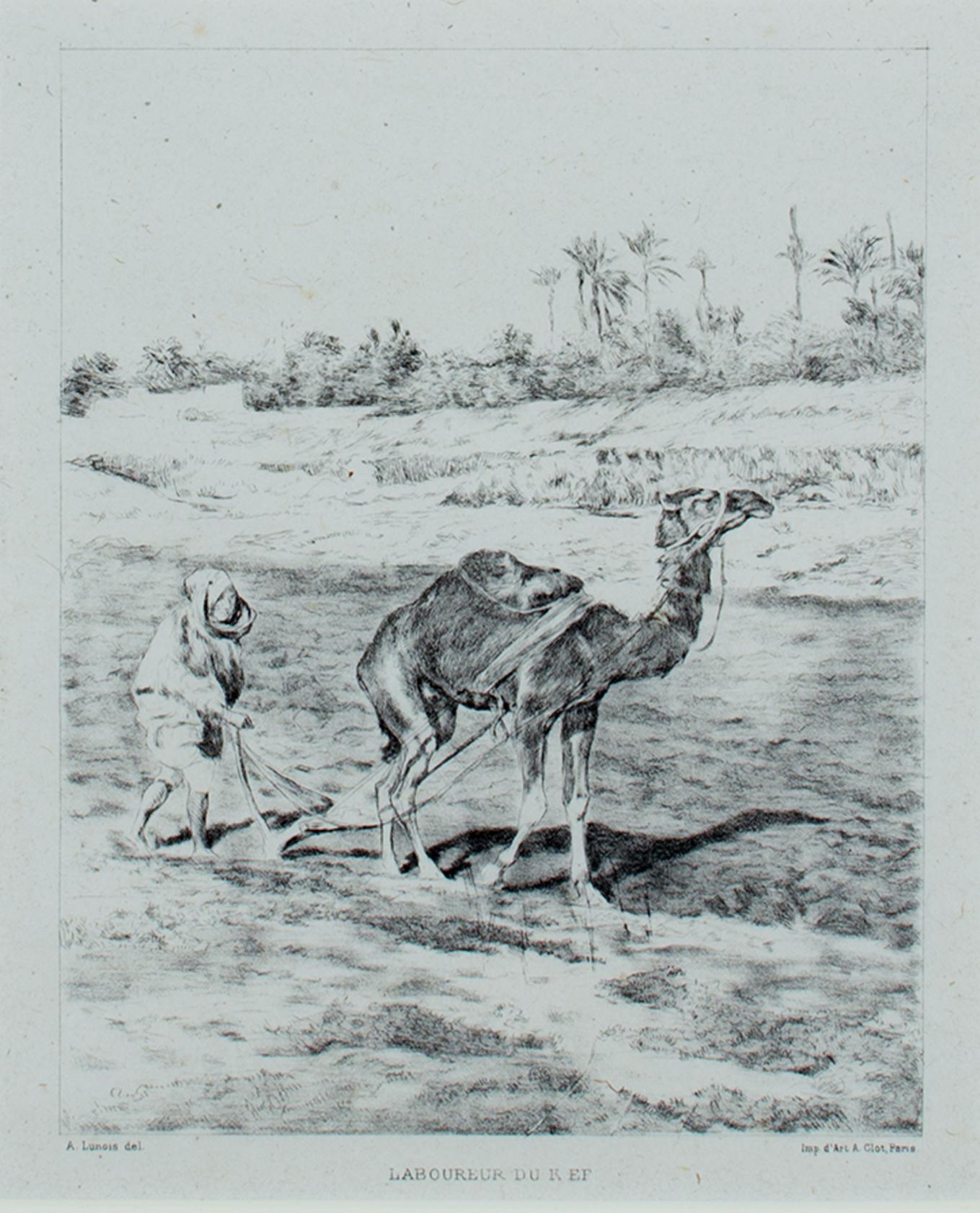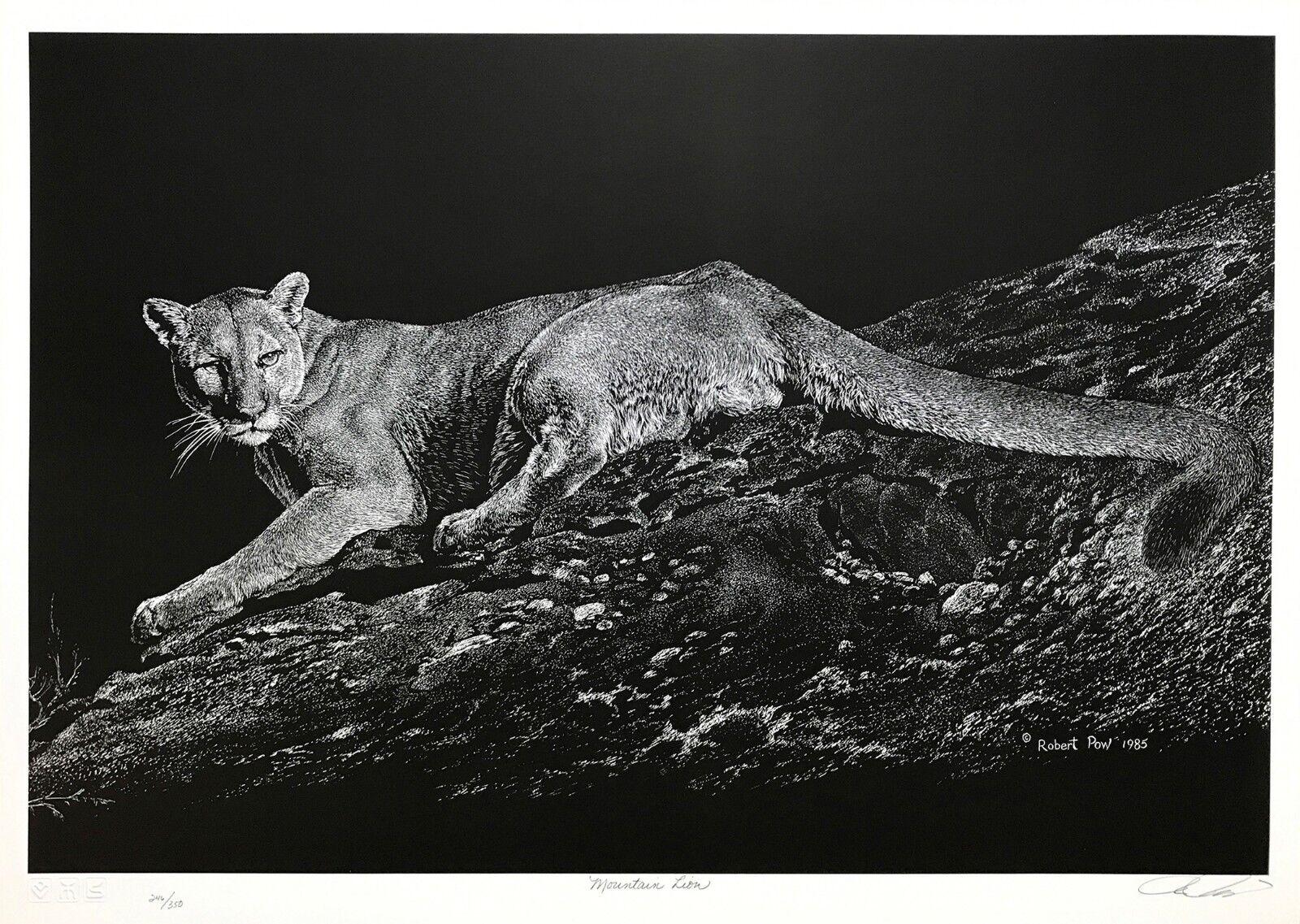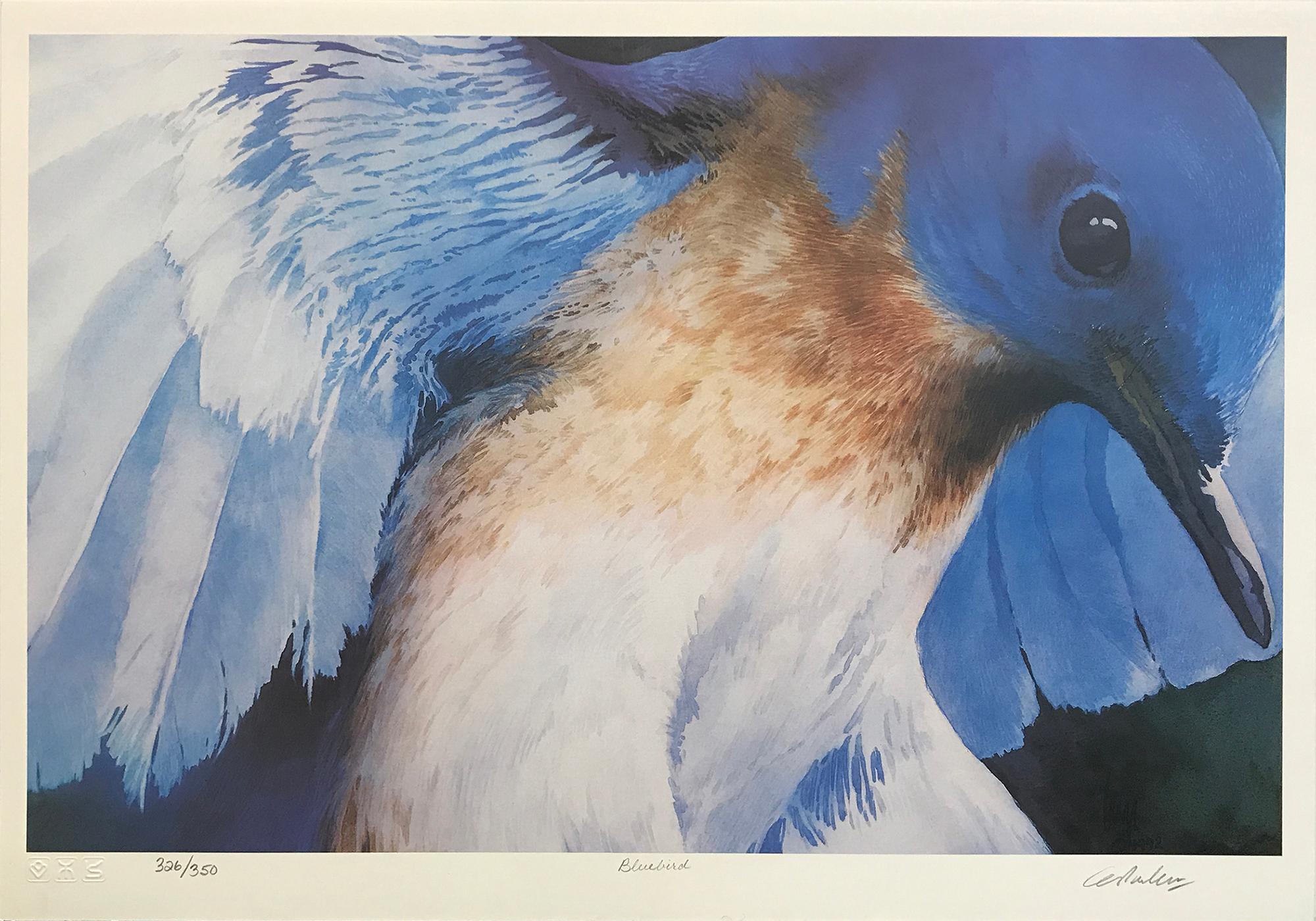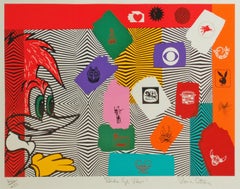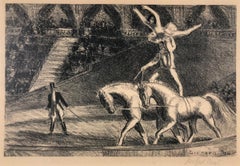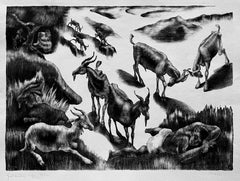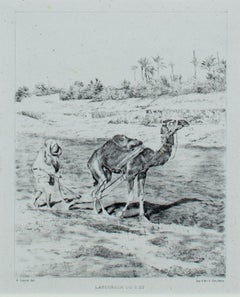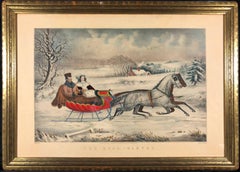
The Road, Winter
View Similar Items
Want more images or videos?
Request additional images or videos from the seller
1 of 5
Nathaniel CurrierThe Road, Wintercirca 1940s
circa 1940s
About the Item
- Creator:Nathaniel Currier (1813 - 1888, American)
- Creation Year:circa 1940s
- Dimensions:Height: 26 in (66.04 cm)Width: 36 in (91.44 cm)
- Medium:
- Movement & Style:
- Period:
- Condition:Please email or call if you have any questions or need more detailed images.
- Gallery Location:Missouri, MO
- Reference Number:1stDibs: LU74732243803
About the Seller
5.0
Vetted Seller
These experienced sellers undergo a comprehensive evaluation by our team of in-house experts.
Established in 1970
1stDibs seller since 2017
141 sales on 1stDibs
Typical response time: 21 hours
More From This SellerView All
- Le Christ a l'Horloge, ParisBy Marc ChagallLocated in Missouri, MOMarc Chagall "Le Christ a l'Horloge, Paris" (Christ in the Clock) 1957 (M. 196) Color Lithograph on Arches Wove Paper Signed in Pencil "Marc Chagall" Lower Right Initialed "H.C." (Hors Commerce) Lower Left, aside from numbered edition of 90 *Floated in Gold Frame with Linen Matting, UV Plexiglass Sheet Size: 18 3/4 x 14 3/4 inches (47.5 cm x 38 cm) Image Size: 9 3/4 x 8 1/2 inches Framed Size: 28.5 x 24.25 inches Marc Chagall was a man of keen intelligence, a shrewd observer of the contemporary scene, with a great sympathy for human suffering. He was born on July 7, 1887 in Vitebsk, Russia; his original name was Moishe Shagal (Segal), but when he became a foremost member of the Ecole de Paris, he adopted French citizenship and the French spelling of his name. Vitebsk was a good-sized Russian town of over 60,000, not a shtetl. His father supported a wife and eight children as a worker in a herring-pickling plant. Sheltered by the Jewish commandment against graven images, the young Chagall never saw so much as a drawing until, one day, he watched a schoolmate copying a magazine illustration. He was ridiculed for his astonishment, but he began copying and improvising from magazines. Both Chagall's parents reluctantly agreed to let him study with Yehuda Pen, a Jewish artist in Vitebsk. Later, in 1906, they allowed their son to study in St. Petersburg, where he was exposed to Russian Iconography and folk art. At that time, Jews could leave the Pale only for business and employment and were required to carry a permit. Chagall, who was in St. Petersburg without a permit, was imprisoned briefly. His first wife, Bella Rosenfeld, was a product of a rich cultivated and intellectual group of Jews in Vitebsk. Chagall was made commissar for the arts for the area, charged with directing its cultural life and establishing an art school. Russian folklore, peasant life and landscapes persisted in his work all his life. In 1910 a rich patron, a lawyer named Vinaver, staked him to a crucial trip to Paris, where young artists were revolutionizing art. He also sent him a handsome allowance of 125 francs (in those days about $24) each month. Chagall rejected cubism, fauvism and futurism, but remained in Paris. He found a studio near Montparnasse in a famous twelve-sided wooden structure divided into wedge-shaped rooms. Chaim Soutine, a fellow Russian Jew, and Modigliani lived on the same floor. To Chagall's astonishment, he found himself heralded as one of the fathers of surrealism. In 1923, a delegation of Max Ernst, Paul Eluard and Gala (later Salvador Dali's wife) actually knelt before Chagall, begging him to join their ranks. He refused. To understand Chagall's work, it is necessary to know that he was born a Hasidic Jew, heir to mysticism and a world of the spirit, steeped in Jewish lore and reared in the Yiddish language. The Hasidim had a special feeling for animals, which they tried not to overburden. In the mysterious world of Kabbala and fantastic ancient legends of Chagall's youth, the imaginary was as important as the real. His extraordinary use of color also grew out of his dream world; he did not use color realistically, but for emotional effect and to serve the needs of his design. Most of his favorite themes, though superficially light and trivial, mask dark and somber thoughts. The circus he views as a mirror of life; the crucifixion as a tragic theme, used as a parallel to the historic Jewish condition, but he is perhaps best known for the rapturous lovers he painted all his life. His love of music is a theme that runs through his paintings. After a brief period in Berlin, Chagall, Bella and their young daughter, Ida, moved to Paris and in 1937 they assumed French citizenship. When France fell, Chagall accepted an invitation from the Museum of Modern Art to immigrate to the United States. He was arrested and imprisoned in Marseilles for a short time, but was still able to immigrate with his family. The Nazi onslaught caught Chagall in Vichy, France, preoccupied with his work. He was loath to leave; his friend Varian Fry rescued him from a police roundup of Jews in Marseille, and packed him, his family and 3500 lbs. of his art works on board a transatlantic ship. The day before he arrived in New York City, June 23, 1941, the Nazis attacked Russia. The United States provided a wartime haven and a climate of liberty for Chagall. In America he spent the war years designing large backdrops for the Ballet. Bella died suddenly in the United States of a viral infection in September 1944 while summering in upstate New York. He rushed her to a hospital in the Adirondacks, where, hampered by his fragmentary English, they were turned away with the excuse that the hour was too late. The next day she died. He waited for three years after the war before returning to France. With him went a slender married English girl, Virginia Haggard MacNeil; Chagall fell in love with her and they had a son, David. After seven years she ran off with an indigent photographer. It was an immense blow to Chagall's ego, but soon after, he met Valentine Brodsky, a Russian divorcee designing millinery in London (he called her Fava). She cared for him during the days of his immense fame and glory. They returned to France, to a home and studio in rustic Vence. Chagall loved the country and every day walked through the orchards, terraces, etc. before he went to work. Chagall died on March 28, 1985 in the south of France. His heirs negotiated an arrangement with the French state allowing them to pay most of their inheritance taxes in works of art. The heirs owed about $30 million to the French government; roughly $23 million of that amount was deemed payable in artworks. Chagall's daughter, Ida and his widow approved the arrangement. Written and submitted by Jean Ershler Schatz, artist and researcher from Laguna Woods, California. Sources: Hannah Grad Goodman in Homage to Chagall in Hadassah Magazine, June 1985 Jack Kroll in Newsweek, April 8, 1985 Andrea Jolles in National Jewish Monthly Magazine, May 1985 Michael Gibson...Category
1950s Modern Figurative Prints
MaterialsLithograph
Price Upon Request - Bird's Eye ViewBy Ronnie CutroneLocated in Missouri, MORonnie Cutrone (1948-2013) "Bird's Eye View" c. 1980s Color Lithograph Ed. 222/250 Signed, Numbered and Titled Image Size: 17 x 23.5 inches Framed Size: approx. 24 x 30 inches. Ronnie Cutrone, a figurehead of the Pop and Post-Pop art scenes, was Andy Warhol's assistant at the Factory atop the Decker Building from 1972-1980, and worked closely with Roy Lichtenstein, combining stylistic elements of both. Cutrone's large-scale paintings of American cartoon icons, like Mickey Mouse, Felix the Cat, and Woody Woodpecker further reinvented kitsch and popular media in terms of fine art. Executed in fluorescent monochromatic colors with the finesse of mass-produced silkscreen and prints, Cutrone's works are the reverse of tromp-l'oeil; they use fine art media (watercolor, pastel, crayon - on high-quality paper) to celebrate, rather than hide, the artifice of their subjects. "Everything is cartoon for me", Cutrone is noted for saying, even "ancient manuscripts...Category
Late 20th Century Pop Art Figurative Prints
MaterialsLithograph
Price Upon Request - Bareback Act, Old HippodromeBy Gifford BealLocated in Missouri, MOBareback Act, Old Hippodrome By Gifford Beal (1879-1956) Signed Lower Right Unframed: 6.5" x 9.5" Framed: 17.5" x 20" Gifford Beal, painter, etcher, muralist, and teacher, was born in New York City in 1879. The son of landscape painter William Reynolds Beal, Gifford Beal began studying at William Merritt Chase's Shinnecock School of Art (the first established school of plein air painting in America) at the age of thirteen, when he accompanied his older brother, Reynolds, to summer classes. He remained a pupil of Chase's for ten years also studying with him in New York City at the artist's private studio in the Tenth Street Studio Building. Later at his father's behest, he attended Princeton University from 1896 to 1900 while still continuing his lessons with Chase. Upon graduation from Princeton he took classes at the Art Students' League, studying with impressionist landscape painter Henry Ward Ranger and Boston academic painter Frank Vincent DuMond. He ended up as President of the Art Students League for fourteen years, "a distinction unsurpassed by any other artist." His student days were spent entirely in this country. "Given the opportunity to visit Paris en route to England in 1908, he chose to avoid it" he stated, "I didn't trust myself with the delightful life in ParisIt all sounded so fascinating and easy and loose." His subjects were predominately American, and it has been said stylistically "his art is completely American." Gifford achieved early recognition in the New York Art World. He became an associate member of the National Academy of Design in 1908 and was elected to full status of academician in 1914. He was known for garden parties, circuses, landscapes, streets, coasts, flowers and marines. This diversity in subject matter created "no typical or characteristic style to his work." Beal's style was highly influenced by Chase and Childe Hassam, a long time friend of the Beal family who used to travel "about the countryside with Beal in a car sketching...Category
20th Century American Modern Animal Prints
MaterialsLithograph
Price Upon Request - National Palace Mexico City, Persecution of the Indian, Revolution, IndependenceBy (after) Diego RiveraLocated in Missouri, MO(after) Diego Rivera "National Palace Mexico City, Central Stairway" (Persecution of the Indian, Revolution, Independence) 1933 from the portfolio "Frescoes of Diego Rivera" Published by the Museum of Modern Art, NY Hand-Signed by the Artist Diego Rivera was born on December 13, 1886 in the mountain town of Guanajuato in Mexico. His mother was an ardent Catholic and his father was a rich and aristocratic revolutionary fighter and an atheist. Little Diego decided in favor of atheism. He swore his family had to leave Guanajuato when he was six because of his diatribes against the Church. When he was eleven he attended the San Carlos Academy of Fine Arts; his real teacher was Jose Posada...Category
1930s Realist Figurative Prints
MaterialsLithograph
- From the Vargas PortfolioBy Alberto VargasLocated in Missouri, MOFrom the Vargas Portfolio **Portfolio Cover Not Included** Lithograph Only Alberto Vargas (1896-1982) was born in Arequipa, Peru, in 1896, the son of...Category
20th Century Realist Nude Prints
MaterialsLithograph
- From the Vargas PortfolioBy Alberto VargasLocated in Missouri, MOFrom the Vargas Portfolio **Portfolio Cover Not Included** Lithograph Only Alberto Vargas (1896-1982) was born in Arequipa, Peru, in 1896, the son of...Category
20th Century Realist Nude Prints
MaterialsLithograph
You May Also Like
- Goat Herder's WifeBy George BiddleLocated in New York, NYGeorge Biddle (1885-1973), Goat Herder’s Wife, 1928, lithograph, signed in pencil lower right and titled and numbered (64/100) in pencil lower left margin [with the inscription ”Bidd...Category
1920s Realist Animal Prints
MaterialsLithograph
- "Laboureur Du Kef (Plowman of Kef), " Original Lithograph by Alexandre LunoisBy Alexandre LunoisLocated in Milwaukee, WI"Laboureur du Kef (Plowman of Kef)" is an original lithograph by Alexandre Lunois. It features a figure plowing the field with a camel. The artist's name is lower left and the printe...Category
1890s Realist Figurative Prints
MaterialsLithograph
- Gazelle - Lithograph by A. Mastroianni - 1970sBy Alberto MastroianniLocated in Roma, ITHand Signed. Edition of 150 prints in Arabic numbers plus 30 prints in roman numbers. Excellent conditions.Category
1970s Realist Animal Prints
MaterialsLithograph
- MOUNTAIN LIONLocated in Aventura, FLLithograph on paper. Hand signed, titled and numbered by the artist. Edition of 350. Artwork is in excellent condition. Certificate of Authenticity is included. All reasonable o...Category
1990s Realist Figurative Prints
MaterialsLithograph, Paper
$150 Sale Price50% Off - BLACK BEAR IN THE CHICKCHOCSBy Claudio D'AngeloLocated in Aventura, FLLithograph on paper. Hand signed, titled and numbered by the artist. Edition of 350. Artwork is in excellent condition. Certificate of Authenticity is included. All reasonable o...Category
Late 20th Century Realist Figurative Prints
MaterialsLithograph, Paper
$150 Sale Price50% Off - BLUE BIRDBy Carl ArlenLocated in Aventura, FLLithograph on paper. Hand signed, titled and numbered by the artist. Edition of 350. Artwork is in excellent condition. Certificate of Authenticity is included. All reasonable off...Category
Late 20th Century Realist Figurative Prints
MaterialsLithograph, Paper
$150 Sale Price25% Off
Recently Viewed
View AllMore Ways To Browse
Currier Ives New York
Antique Political Cartoons
John E Winters
Framed Antique Sheet Music
James Barnor
Antique Christmas Scenes
Victorian Barn
Handcolored Lithographs
N Currier
Used Horse Sleigh
Antique Christmas Prints
T Bailey
Lexington Antique
Barnum Bailey
Barnum And Bailey
Antique Firemans
Antique Fireman
Barn 17
